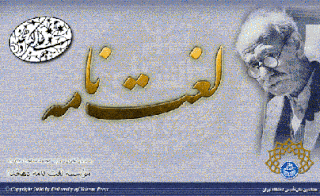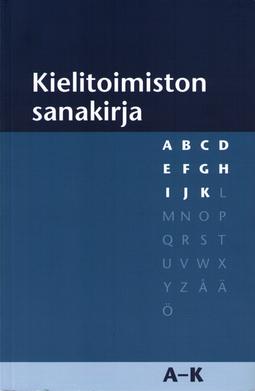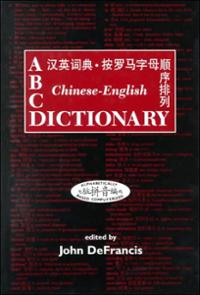
A dictionary is a listing of lexemes from the lexicon of one or more specific languages, often arranged alphabetically, which may include information on definitions, usage, etymologies, pronunciations, translation, etc. It is a lexicographical reference that shows inter-relationships among the data.

The Oxford English Dictionary (OED) is the principal historical dictionary of the English language, published by Oxford University Press (OUP), a University of Oxford publishing house. The dictionary, which published its first edition in 1884, traces the historical development of the English language, providing a comprehensive resource to scholars and academic researchers, and provides ongoing descriptions of English language usage in its variations around the world.

Merriam-Webster, Incorporated is an American company that publishes reference books and is mostly known for its dictionaries. It is the oldest dictionary publisher in the United States.

Inari Sámi is a Sámi language spoken by the Inari Sámi of Finland. It has approximately 400 speakers, the majority of whom are middle-aged or older and live in the municipality of Inari. According to the Sámi Parliament of Finland, 269 persons used Inari Sámi as their first language. It is the only Sámi language that is spoken exclusively in Finland. The language is classified as being seriously endangered, as few children learn it; however, more and more children are learning it in language nests. In 2018, Inari Sámi had about 400 speakers; due to revival efforts, the number had increased.

A Greek–English Lexicon, often referred to as Liddell & Scott or Liddell–Scott–Jones (LSJ), is a standard lexicographical work of the Ancient Greek language originally edited by Henry George Liddell, Robert Scott, Henry Stuart Jones, and Roderick McKenzie and published in 1843 by the Oxford University Press.

The Deutsches Wörterbuch, abbreviated DWB, is the largest and most comprehensive dictionary of the German language in existence. Encompassing modern High German vocabulary in use since 1450, it also includes loanwords adopted from other languages into German. Entries cover the etymology, meanings, attested forms, synonyms, usage peculiarities, and regional differences of words found throughout the German speaking world. The dictionary's historical linguistics approach, illuminated by examples from primary source documents, makes it to German what the Oxford English Dictionary is to English. The first completed DWB lists over 330,000 headwords in 67,000 print columns spanning 32 volumes.

First published in 1918, Kenkyusha’s New Japanese-English Dictionary has long been the largest and most authoritative Japanese-English dictionary. Translators, scholars, and specialists who use the Japanese language affectionately refer to this dictionary as the Green Goddess or GG because of its distinctive dark-green cover.
In morphology and lexicography, a lemma is the canonical form, dictionary form, or citation form of a set of word forms. In English, for example, break, breaks, broke, broken and breaking are forms of the same lexeme, with break as the lemma by which they are indexed. Lexeme, in this context, refers to the set of all the inflected or alternating forms in the paradigm of a single word, and lemma refers to the particular form that is chosen by convention to represent the lexeme. Lemmas have special significance in highly inflected languages such as Arabic, Turkish, and Russian. The process of determining the lemma for a given lexeme is called lemmatisation. The lemma can be viewed as the chief of the principal parts, although lemmatisation is at least partly arbitrary.
The Nihon Kokugo Daijiten (日本国語大辞典), also known as the Nikkoku (日国) and in English as Shogakukan's Unabridged Dictionary of the Japanese Language, is the largest Japanese language dictionary published.

The Dehkhoda Dictionary or Dehkhoda Lexicon is the largest comprehensive Persian encyclopedic dictionary ever published, comprising 200 volumes. It is published by the Tehran University Press (UTP) under the supervision of the Dehkhoda Dictionary Institute. It was first published in 1931. It traces the historical development of the Persian language, providing a comprehensive resource to scholars and academic researchers, as well as describing usage in its many variations throughout the world.
Japanese dictionaries have a history that began over 1300 years ago when Japanese Buddhist priests, who wanted to understand Chinese sutras, adapted Chinese character dictionaries. Present-day Japanese lexicographers are exploring computerized editing and electronic dictionaries. According to Nakao Keisuke (中尾啓介):
It has often been said that dictionary publishing in Japan is active and prosperous, that Japanese people are well provided for with reference tools, and that lexicography here, in practice as well as in research, has produced a number of valuable reference books together with voluminous academic studies. (1998:35)

The Academic Dictionary of Lithuanian is a comprehensive thesaurus of the Lithuanian language and one of the most extensive lexicographical works in the world. The 20 volumes encompassing 22,000 pages were published between 1941 and 2002 by the Institute of the Lithuanian Language. An online and a CD version was made available in 2005. It contains about 236,000 headwords, or 500,000 if counting sub-headwords, reflecting modern and historical language both from published texts since the first published book in 1547 until 2001 and recorded from the vernacular. Definitions, usage notes, and examples are given for most words. The entry length varies from one sentence to almost a hundred pages. For example, 46 pages are devoted to 298 different meanings of taisyti and its derivatives.

There are two types of dictionaries regularly used in the Chinese language: 'character dictionaries' list individual Chinese characters, and 'word dictionaries' list words and phrases. Because tens of thousands of characters have been used in written Chinese, Chinese lexicographers have developed a number of methods to order and sort characters to facilitate more convenient reference.
The English Dialect Dictionary (EDD) is the most comprehensive dictionary of English dialects ever published, compiled by the Yorkshire dialectologist Joseph Wright (1855–1930), with strong support by a team and his wife Elizabeth Mary Wright (1863–1958). The time of dialect use covered is, by and large, the Late Modern English period (1700–1903), but given Wright's historical interest, many entries contain information on etymological precursors of dialect words in centuries as far back as Old English and Middle English. Wright had hundreds of informants ("correspondents") and borrowed from thousands of written sources, mainly glossaries published by the English Dialect Society in the later 19th century, but also many literary texts written in dialect. In contrast to most of his sources, Wright pursued a scholarly linguistic method, providing full evidence of his sources and antedating modes of grammatical analysis of the 20th century. The contents of the EDD's nearly 80.000 entries were generally ignored during the 20th century but were made accessible by the interface of EDD Online, the achievement of an Innsbruck University research project first published in 2012 and repeatedly revised since.

Finnish is a Finnic language of the Uralic language family, spoken by the majority of the population in Finland and by ethnic Finns outside of Finland. Finnish is one of the two official languages of Finland, alongside Swedish. In Sweden, both Finnish and Meänkieli are official minority languages. Kven, which like Meänkieli is mutually intelligible with Finnish, is spoken in the Norwegian counties of Troms and Finnmark by a minority of Finnish descent.

Dictionary of Contemporary Finnish is the most recent dictionary of the modern Finnish language. It is edited by the Institute for the Languages of Finland. The current printed edition was first published in 2006 and is based on the 2004 digital version of the same name. The printed version lacks some features of the electronic version, such as the latter's index of Finnish place names (asuinpaikkahakemisto).

The Oxford Dictionary of English (ODE) is a single-volume English dictionary published by Oxford University Press, first published in 1998 as The New Oxford Dictionary of English (NODE). The word "new" was dropped from the title with the Second Edition in 2003. The dictionary is not based on the Oxford English Dictionary (OED) – it is a separate dictionary which strives to represent faithfully the current usage of English words. The Revised Second Edition contains 355,000 words, phrases, and definitions, including biographical references and thousands of encyclopaedic entries. The Third Edition was published in August 2010, with some new words, including "vuvuzela".
The Kamus Besar Bahasa Indonesia is the official dictionary of the Indonesian language compiled by Language Development and Fostering Agency and published by Balai Pustaka. This dictionary is the primary reference for the standard Indonesian language because it is the most complete and accurate Indonesian dictionary ever published by publishers who have patent rights from the government of the Republic of Indonesia under the auspices of the Indonesian Ministry of Education, Culture, Research, and Technology. It is also considered canonical to measure which words have been formally incorporated into Indonesian.

The ABC Chinese–English Dictionary or ABC Dictionary (1996), compiled under the chief editorship of John DeFrancis, is the first Chinese dictionary to collate entries in single-sort alphabetical order of pinyin romanization, and a landmark in the history of Chinese lexicography. It was also the first publication in the University of Hawaiʻi Press's "ABC" series of Chinese dictionaries. They republished the ABC Chinese–English Dictionary in a pocket edition (1999) and desktop reference edition (2000), as well as the expanded ABC Chinese–English Comprehensive Dictionary (2003), and dual ABC English–Chinese, Chinese–English Dictionary (2010). Furthermore, the ABC Dictionary databases have been developed into computer applications such as Wenlin Software for learning Chinese (1997).
Ryssä is a Finnish term for a Russian person, considered derogatory today. The term is also used as a collective term for Russians or Russia, and may refer to the Russian language. The neutral word for "Russian person" in modern Finnish is venäläinen, from Venäjä for "Russia".













